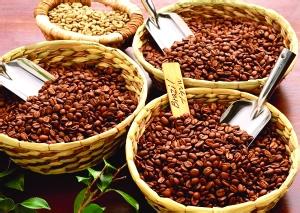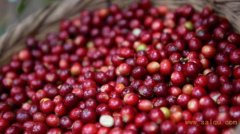Brief introduction to the treatment method of Grinding degree and Baking degree of Galapagos Fine Coffee beans with Sweet in Acid

And the coffee on the island is basically grown in the mountains about 500m above sea level. Friends who have seen our coffee bean series should know that the higher the altitude, the better the quality of coffee. Generally speaking, it is necessary to reach an altitude of 1700 to 2100 meters before it can be called high-quality coffee beans. Isn't this 500m a long way off? This is what makes Galapagos Coffee unique, because the archipelago is located at the confluence of cold currents in Peru in the south and warm equatorial currents in the north. Affected by the cold and warm ocean currents, a small ecological environment has been formed. The climate of 500m here is equivalent to that of 900m-1800 m inland. This terrain is very suitable for the growth of very hard coffee beans (SHB) with high acidity, and is also the key to the high quality of coffee. Ecuador is a country located in South America. Coffee beans are divided into two varieties: Galapagos and Gigante, both of which have the characteristics of large grains and heavy weight. Galapagos (Galapagos) is pronounced in Spanish and we translate it into Cologne in Chinese. It belongs to Ecuador nationally, but its coffee will not be named Ecuador, because although Galapagos belongs to Ecuador, it is located in the Pacific Ocean, more than 1100 kilometers away from the mainland and covering an area of more than 7500 square kilometers. it is an archipelago of 13 islands and 19 reefs solidified by lava from undersea volcanoes, stretching from the South American continent to the Pacific Ocean. There are 1000 kilometers of coffee beans are really picky about the environment in which they grew up. First of all, they must live in the upper level (altitude), warm and humid climate, sunny and shady, fertile soil and plenty of water. I like cool but not too cold. I like warmth but not too hot. Most of the places that meet these conditions are in the tropics between latitude 25 °south and latitude 25 °north around the equator, which is often referred to as the coffee belt. We are familiar with things like Ethiopia and Kenya in Africa, Brazil and Colombia in South America, Panama and Guatemala in Central America, Indonesia and Yemen in the Asia-Pacific region. These are the more famous coffee producing countries, and many of our favorite boutique coffees come from these countries. This time I would like to introduce you to a coffee that is rarely heard of-Galapagos Coffee. Do you feel strange? Let me put it another way-Ecuador, are you familiar with it?
In 1875, the native ManuelJ.Cobos of Ecuador began to grow Arab bourbon coffee trees at the Hasunda Cafe Garden (HaciendaElCafetal) in San Cristobal.
Coffee producing areas of the Galapagos Islands:
Coffee is grown in San Cristobal (SaintCristobal). Arab bourbon coffee trees are planted in the Hasunda Coffee Garden (HaciendaElCafetal) in San Cristobal. The elevation of the plantation is between 140 and 275m, and the climate of the area is equivalent to that of 915m to 1830 m inland. This gradient is suitable for the growth of high acidity extra hard coffee beans (SHB) and is the key to the high quality of coffee.
St. Cristobal is a larger island in the Galapagos Islands (Galapagos Islands) and the only one in the archipelago with plenty of fresh water. At an altitude of 410m, there is a small lake called El.Junco, which forms streams along the rocks and volcanic rocks on the southern slope of the island, and mineral-rich fresh water moistens the land of St. Cristobal, keeping the soil moist and fertile. The local microclimate caused by the Humboldt current (HumboldtCurrent), strong equatorial sunlight and sharp temperature changes (43 degrees at sea level and 10-16 degrees above sea level at 275m) provide unique advantages.
Features of Galapagos Islands Coffee:
The coffee produced in the Galapagos Islands (Galapagos Islands) is a treasure of coffee. It is of excellent quality and is grown without any chemicals.
Flavor: rich in taste, sweet in sour
Suggested baking method: medium baking
★★★: excellent
Galapagos Islands Coffee Market:
Because of the unique role of the Galapagos Islands in the course of history, the Government of Ecuador has designated the Galapagos Islands as a national park, the land is no longer allowed to be reclaimed as new agricultural land, and the introduction and use of chemical fertilizers, pesticides, herbicides and other chemicals are strictly prohibited, so coffee in the Galapagos Islands is recognized as a natural product.
The Galapagos archipelago is now designated as a national park by Ecuador and listed as "human property" by UNESCO. It is far from land and largely avoids the impact of human behavior on nature. In order to maintain the local natural ecology as much as possible, Ecuador legally prohibits the use of all kinds of artificial fertilizers, herbicides and pesticides. Therefore, the Galapagos coffee beans are all organic coffee beans, which are grown without any chemical agents and are recognized as natural green boutique coffee. this naturally grown coffee is mild and rich in taste, sweet in sour and slightly floral, fruity and caramel.
In fact, most island beans are very likeable, but low production and high prices also widen the gap between them and the public. Recently, this Galapagos appeared in our students' coffee tasting list. After medium roasting, it shows a good sense of balance, soft acidity, refreshing flower fragrance, like jasmine and early autumn sweet-scented osmanthus, which is really a bit of blue mountain style! If you like the Blue Mountain style and consider the ratio of performance to price, then choose this Galapagos. Galapagos coffee is of good quality and is mainly exported to Scandinavia and other Nordic countries, so our people know very little about it. As coffee is drunk by people all over the world, the world coffee industry is also moving towards mass production. A small-scale planting model like Galapagos actually limits its development. If it does not expand its scale, it is likely that it will eventually be forced to give up because of unprofitable profits. The coffee plantation owners here are also aware of this problem. In the early 1990s, they gradually expanded the area of their estates and made full use of their unique advantages. The coffee in the Galapagos Islands has its own unique characteristics. It was brought to the island around 1870, and 150 years later, coffee varieties are still the original species of coffee grown at that time, the ancient bourbon species, and have never been bred artificially.
Important Notice :
前街咖啡 FrontStreet Coffee has moved to new addredd:
FrontStreet Coffee Address: 315,Donghua East Road,GuangZhou
Tel:020 38364473
- Prev

A brief introduction to the cultivation of Galapagos boutique coffee beans with pleasant aroma, geographical location, climate and altitude
ES Coffee is a clean organic coffee grown on the slopes of the Andes in Latin America. It is 100% pure coffee, and the quality of our coffee has been guaranteed and improved by working to improve the economic and working conditions of the plantation, while maintaining the small scale of the coffee plantation and the biodiversity in the hospital. In addition, it is a very important economic source of coffee origin.
- Next

A brief introduction to the description of taste and aroma characteristics of Bolivian boutique coffee beans with balanced taste
The goal of planting coffee in the whole Takesi manor is 200ha, but only 13ha is planted and harvested very little Typica species, and the annual yield is only 120bags. This is not only fine agriculture, but also a farming model that respects nature. Takesi is the name of the local natives, the place name and the snow water from the mountains, also known as Takesi. After the publication of the 2009 CoE final, Takesi is no longer without.
Related
- Detailed explanation of Jadeite planting Land in Panamanian Jadeite Manor introduction to the grading system of Jadeite competitive bidding, Red bid, Green bid and Rose Summer
- Story of Coffee planting in Brenka region of Costa Rica Stonehenge Manor anaerobic heavy honey treatment of flavor mouth
- What's on the barrel of Blue Mountain Coffee beans?
- Can American coffee also pull flowers? How to use hot American style to pull out a good-looking pattern?
- Can you make a cold extract with coffee beans? What is the right proportion for cold-extracted coffee formula?
- Indonesian PWN Gold Mandrine Coffee Origin Features Flavor How to Chong? Mandolin coffee is American.
- A brief introduction to the flavor characteristics of Brazilian yellow bourbon coffee beans
- What is the effect of different water quality on the flavor of cold-extracted coffee? What kind of water is best for brewing coffee?
- Why do you think of Rose Summer whenever you mention Panamanian coffee?
- Introduction to the characteristics of authentic blue mountain coffee bean producing areas? What is the CIB Coffee Authority in Jamaica?

